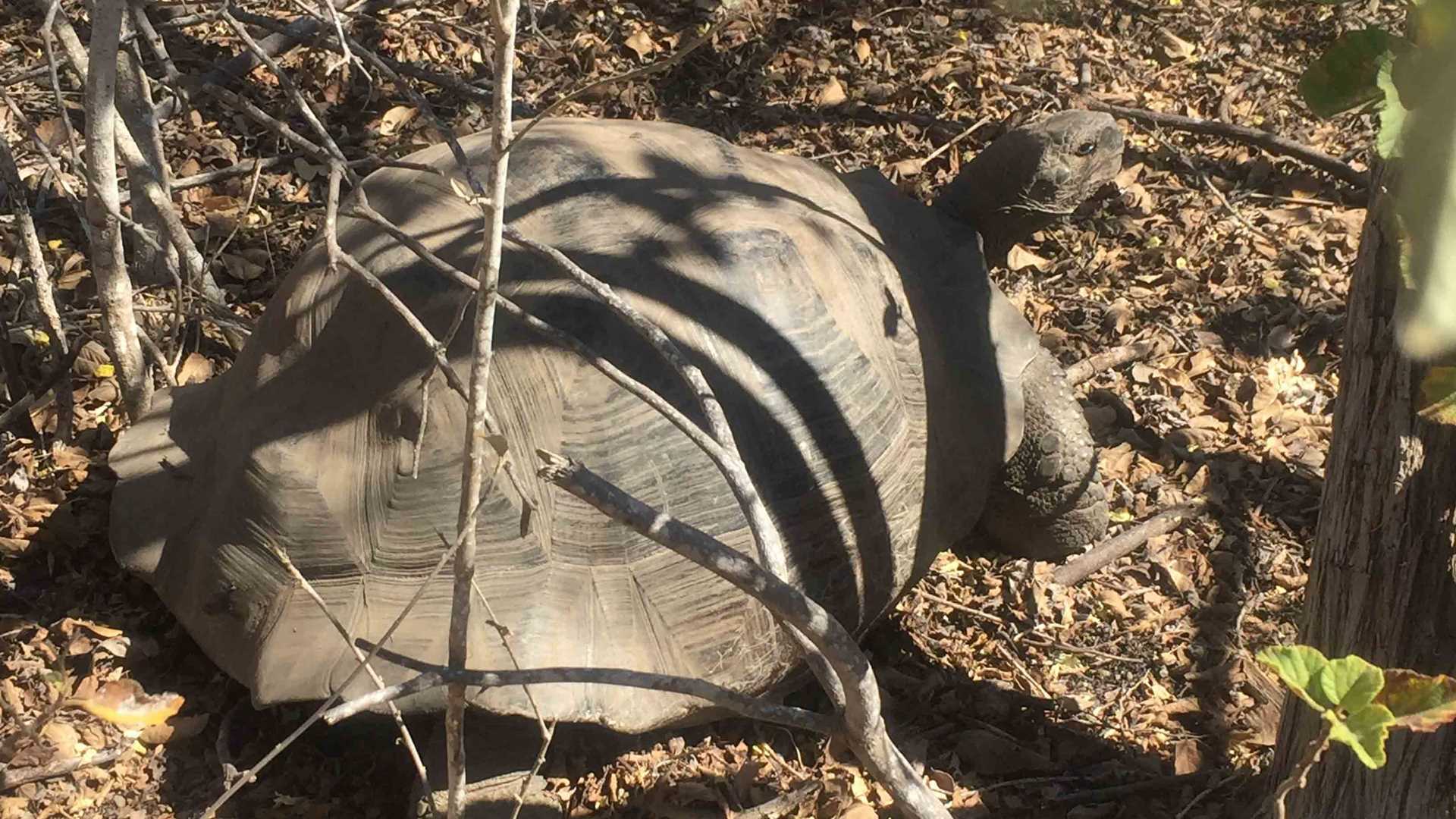Isabela is by far the largest island in the archipelago; with an area of about four thousand square kilometers, it comprises 50% of the total area of the islands. It is considered to be one of the most beautiful of the islands, with active volcanoes, unique fauna and incredible places to be visited. Today we continued our expedition, visiting two of the most famous sites on Isabela, Urbina Bay and Tagus Cove.
Early in the morning we headed to the calm bay of Urbina, which is located on the western side of Isabela Island at the foot of Alcedo Volcano. This place offers an unique landscape, due to the fact that the landing beach and its adjacent coastline didn’t exist before 1954, when two square kilometers of marine floor was uplifted by about ten meters. The pre-uplift beach is now almost 200 meters from the new landing beach, and is home to land iguanas and giant tortoises that use the soft soil for nesting. Walking inland, we had our first encounter with a land iguana that was basking beside its burrow after a long and cold night. This iguana, as opposed to the marine iguanas that we have seen thus far, is solitary and doesn’t need to feed in the ocean. A short distance from the iguana, we observed a giant tortoise which was abandoning the vegetation, walking along the trail just in front our guests. We observed the remains of some barnacles and seaworms as petrified rocks, mute witnesses of that incredible geological event that occurred more than sixty years ago; after the hike, we had chance to take a dip from the beach, observing some flightless cormorants swimming along the shoreline.
In the afternoon and after short navigation, the National Geographic Endeavour, dropped anchor at Tagus Cove, an anchorage used by pirates, buccaneers and other early visitors, which still bears the inscriptions from visitors in the 19th century. Tagus Cove offers great places for many activities such hiking, deep water snorkeling, kayaking or Zodiac cruising along the coastline, where it is possible to observe great number of marine birds. Along the seashore, Galapagos penguins and flightless cormorants were seen drying their feathers with the last beams of sun, while in the water, some sea lions showed us their fins, as if inviting us to swim with them. Just before the sunset, along the seashore of Tagus Cove, we observed penguins fishing together. Almost like torpedoes, they swam so fast, disappearing under the Zodiac and reappearing with fish in their bills. After some minutes in the ocean, finally they moved back to the rocks, where we had chance to take good pictures of them. It was late when we returned to the ship, tired but with the best memories of this incredible and unique place.







